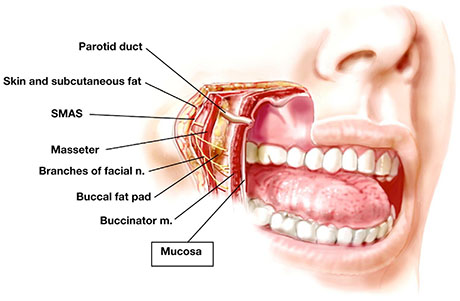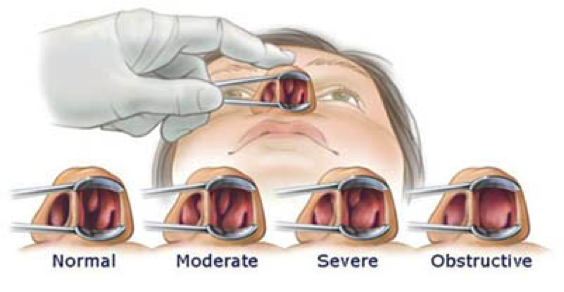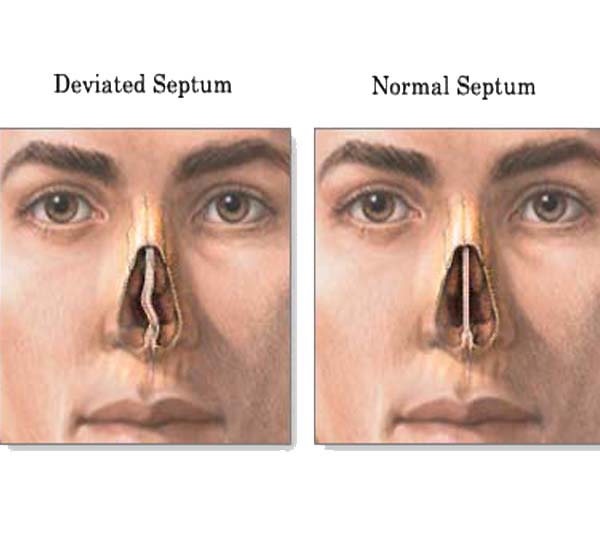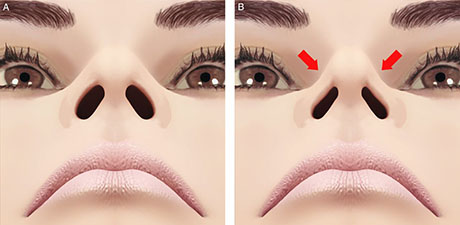What is a nasal obstruction?
Nasal obstruction is the sensation of reduced air flow either through one nostril (unilateral) or both nostrils (bilateral). There are four main subdivisions:
- · Mucosal swelling
- · Septal deviation
- · Collapse of the nasal valves
- · Nasopharyngeal obstruction



Mucosal swelling
The mucosa is the thin moist lining that covers the bone and cartilage inside the nose.
AUTONOMIC RHINITISClear mucus production is the primary problem with less nasal obstruction. This is due to overactivity of the glands in the nose. It is not common and usualy occurs in the over 60s.
RHINITIS MEDICAMENTOSAOveruse of some decongestant nasal sprays (Otrivine, Sinex). These can help decongest the nose for a few hours if you have a cold but should not be taken for more than a few days as they damage the lining of the nose.
CHRONIC INFECTIONThis is not common. It is associated with a mucky discoloured production of green mucus through the day.
IDIOPATHIC RHINITISWhere neither allergy nor infection can be found yet the lining of the nose is swollen.
A range of rare conditions can affect the lining of the nose. These often cause a lot of crusting, spotting of blood and nasal obstruction. If there is a lot of crusting or whistling then your doctor may refer you to an ear nose and throat surgeon for further tests.
Septal deviation
The septum is a thin piece of bone and cartilage seperating the left and the right side of the nasal cavity. In some people the septum is bent or deviated over to one side and this blocks the air passage of the nose.
Septal deviation may be associated with a visibly deformed nose and a history of nasal trauma although it is not necessary as the cartilage may bend and deform as your nose grows.
Nasal obstruction is the predominant symptom, usually on one side. However, if other symptoms are present other disease processes must be excluded.
Management depends on the severity of nasal obstruction. Surgery to correct the deformity can be undertaken if the nose is blocked or unsightly.


Collapse of the nasal valves
Normally on breathing in through the nostrils there is a small amount of collapse of the nostrils. Often this collapse stops if the mucosal swelling (as mentioned above) is treated.
Occasionally the problem is primarily due to a ‘floppy' valve or side wall of the nose collapsing. Treatment using external nasal splints can sometimes be help at night. Surgery in this area is not straightforward.
Nasopharyngeal obstruction
The back of the nose just before it enters the back of the throat is called the nasopharynx. The adenoids are the most common cause of nasal obstruction in children reaching maximum size between the age of three and five and then reduce in size often by the age of seven or eight and can hardly be seen by the late teens.
Snoring alone is not an indication for adenoid removal but if the child also stops breathing while asleep (apnoea - stops breathing for more than 10 seconds regularly without a cold) then adenoidectomy and tonsillectomy may be helpful.
Be aware
- · In children with a blocked nose on one side and a one sided nasal discharge, a foreign body may be in the nose
- · Nasal polyps are rare in children and further tests should be done
- · Nasal obstruction of one side of the nose in adults, with or without bleeding, needs to be examined carefully by an ear nose and throat surgeon
- · Avoid the long-term use of nasal medication purchased over the counter in chemists unless specifically advised by your family doctor or ear nose and throat surgeon. If in doubt contact your doctor and read the instructions carefully
By Mark Johnston and Nick Jones, Queens Medical Centre, Nottingham
Disclaimer
The details in this section are for general information only. Always check with your own doctor.